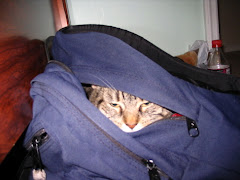 There is good news to celebrate during this holiday season. Research scientists at Pittsburgh's Carnegie Mellon University have written about the first definite connection between reading and improved brain function. Here is the article from the Pittsburgh (PA) Tribune Review, published from staff reports on December 9. And visit the site FiveDads.com, where you can record yourself with a musical background and create an mp3 to share with your kids. It's a great way to be with your child even when you can't be with them.
There is good news to celebrate during this holiday season. Research scientists at Pittsburgh's Carnegie Mellon University have written about the first definite connection between reading and improved brain function. Here is the article from the Pittsburgh (PA) Tribune Review, published from staff reports on December 9. And visit the site FiveDads.com, where you can record yourself with a musical background and create an mp3 to share with your kids. It's a great way to be with your child even when you can't be with them.Two Carnegie Mellon University scientists have uncovered the first evidence that intensive instruction to improve reading skills in young children causes the brain to physically rewire itself.
This instruction causes the brain to create new white matter that improves communication with the brain, CMU researchers Timothy Keller and Marcel Just reported today in the journal Neuron.
These findings could result in new strategies in the treatment of mental disorders, including autism, scientists said.
Keller and Just found that brain imaging of children between the ages of 8 and 10 showed that the quality of white matter — the brain tissue that carries signals between areas of gray matter where information is processed — improved substantially after children received 100 hours of remedial training.
After the training, imaging showed that the capability of the white matter to transmit signals efficiently had increased, and testing showed the children could read better.
"We're excited about these results," Just said in a statement. "The indication that behavioral intervention can improve both cognitive performance and the microstructure of white matter tracts is a breakthrough for treating and understanding development problems."
The research was funded by grants from the Richard King Mellon Foundation and the National Institute of Mental Health.
"The exciting breakthrough here is detecting changes in brain connectivity with behavioral treatment. This finding with reading deficits suggests an exciting new approach to be tested in the treatment of mental disorders, which increasingly appear to be due to problems in specific brain circuits," said Dr. Thomas R. Insel, director of the National Institute of Mental Health.
Reading aloud to kids at FiveDads.com
Thanks to the BookDads website for the following. It's a great, creative, inexpensive way to be with your child even when you're not together, whether it's during the busy holiday season or throughout the year.
Check out this British website FiveDads.com. It provides an opportunity for dads, or anyone, to read to their kids even when they are away. For about $10 you can read one of 15 popular stories into your computer’s microphone and get an mp3 recording that your child can listen to if you are traveling or away from them.
For more information visit: FiveDads.com.







































